Posts Tagged: monarchs
The King of the Butterflies on the Queen of Annuals
Is there anything more beautiful than a monarch butterfly, Danaus plexippus, nectaring on a Mexican sunflower (Tithonia rotundifolia)...
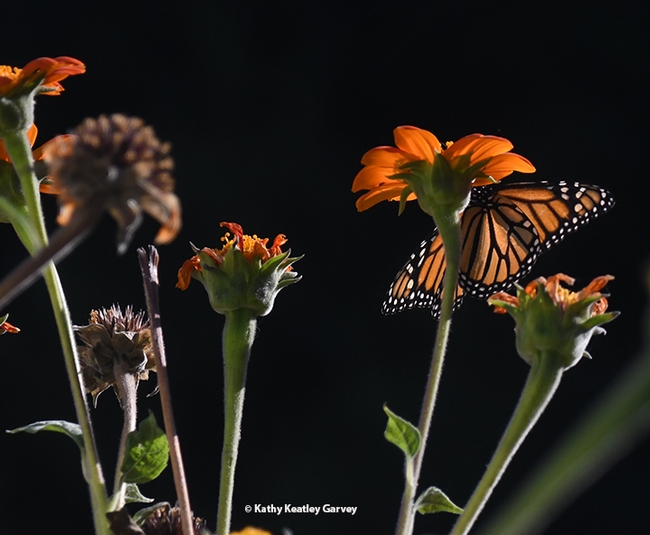
A monarch butterfly sipping nectar from a Mexican sunflower, Tithonia rotundifola, in Vacaville, Calif., on Oct. 30. (Photo by Kathy Keatley Garvey)
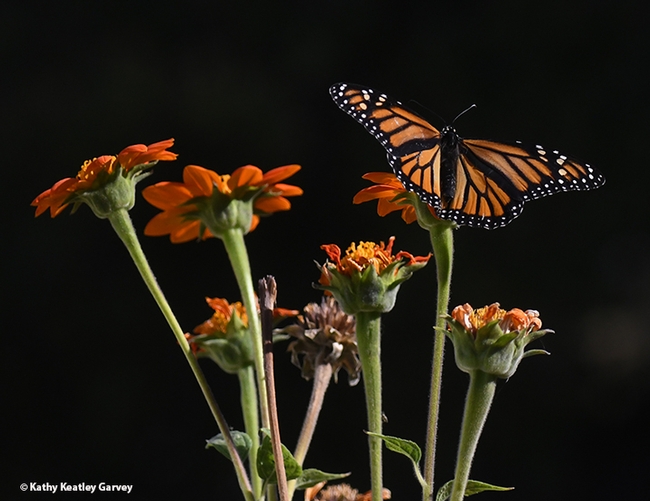
A monarch butterfly spreads its wings on a Mexican sunflower, Tithonia rotundifola, in Vacaville, Calif., on Oct. 30. (Photo by Kathy Keatley Garvey)
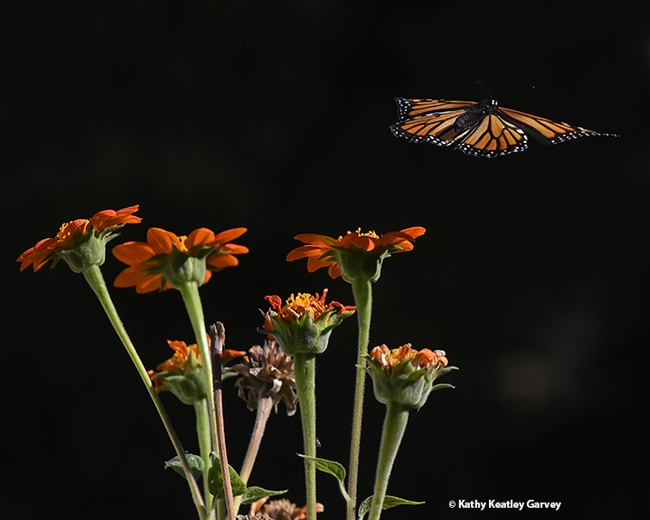
As striking as a stain glass window, the monarch takes flight. (Photo by Kathy Keatley Garvey)
Of Monarch Eggs, Ladybug Eggs and Oleander Aphids
So you're growing milkweed for the first time--or found some milkweed--and you're trying to figure out how to identify a monarch egg. Monarchs lay...

Monarch eggs are usually one to a leaf, but sometimes Mama Monarch deposits multiple eggs on a single leaf. (Photo by Kathy Keatley Garvey)
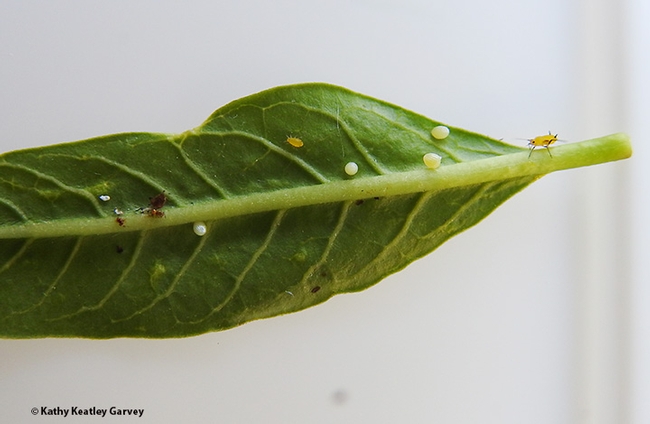
Find the oleander aphids! Monarch eggs and oleander aphids both occupying a leaf. (Photo by Kathy Keatley Garvey)
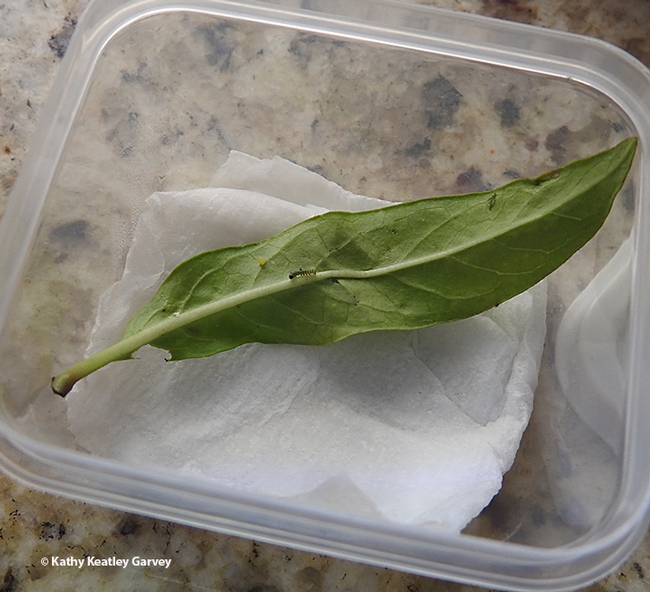
An egg and a newly emerged caterpillar sharing a leaf. (Photo by Kathy Keatley Garvey)
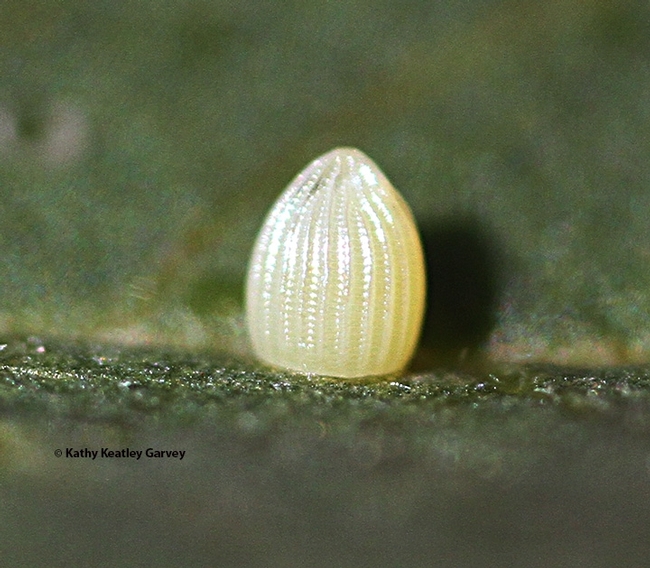
Close-up of a monarch egg. This image was taken with a Canon MPE-65mm lens. (Photo by Kathy Keatley Garvey)
A 'Very Poor Year' for Monarchs in Pacific Northwest
It's been a "very poor year" for monarch butterflies in the Pacific Northwest. So, folks, if you're in their migratory pathway and anticipate seeing...
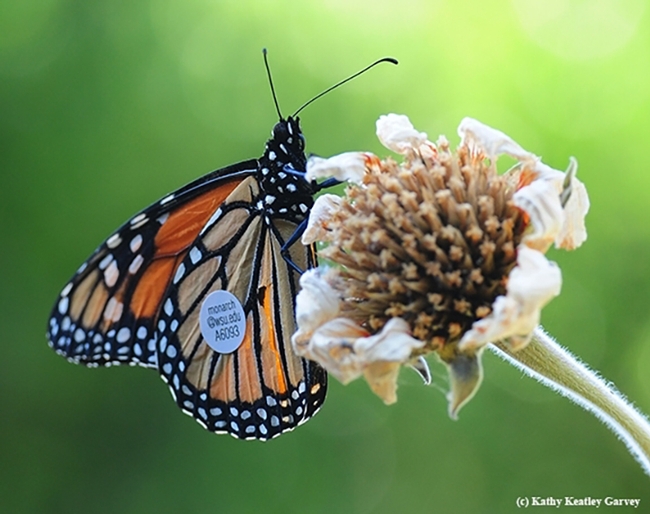
This migrating monarch flew from a vineyard in Ashland, Ore. to a garden in Vacaville, Calif. in 2016. This amounted to 285 miles in seven days or about 40.7 miles per day, according to WSU entomologist David James, who studies migratory monarchs.(Photo by Kathy Keatley Garvey)
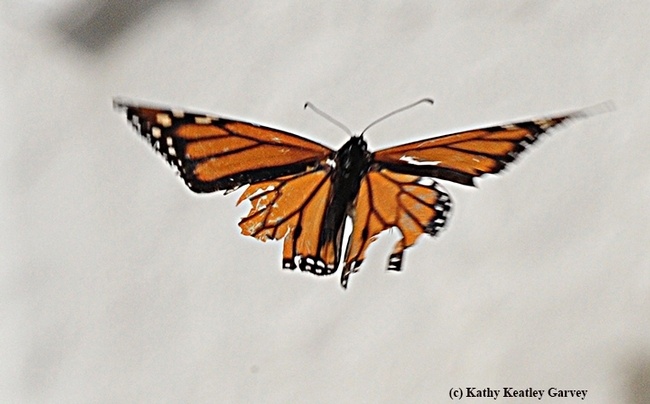
A tattered and torn migrating monarch in Vacaville, Calif. This image was taken in 2016. (Photo by Kathy Keatley Garvey)
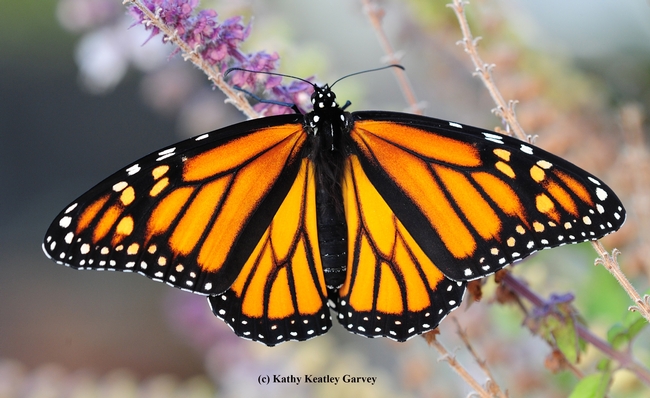
A newly eclosed female monarch. (Photo by Kathy Keatley Garvey)
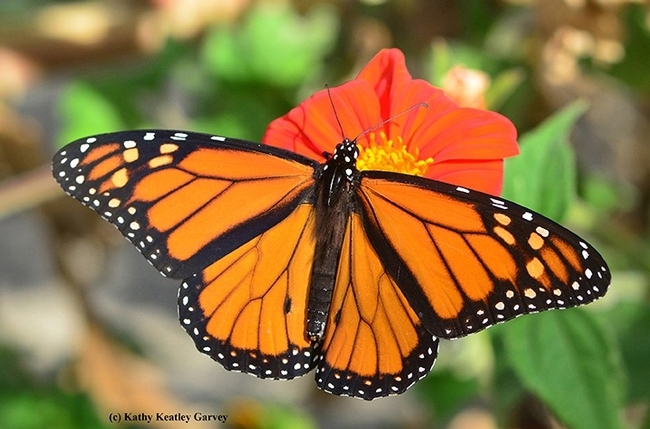
A newly eclosed male monarch. (Photo by Kathy Keatley Garvey)
Magical, Miraculous Monarch Moments
When you observe a monarch butterfly laying eggs on your milkweed--and see the predators and parasitoids circling in anticipation--act fast if...
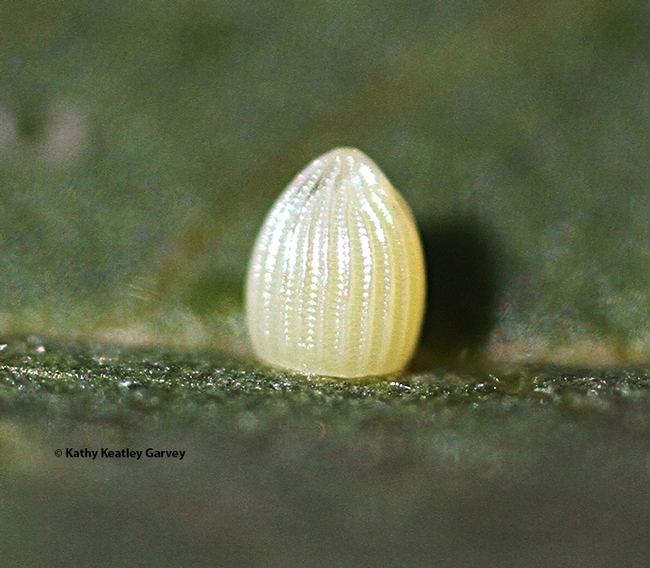
A monarch egg. Soon it will hatch. (Photo by Kathy Keatley Garvey)
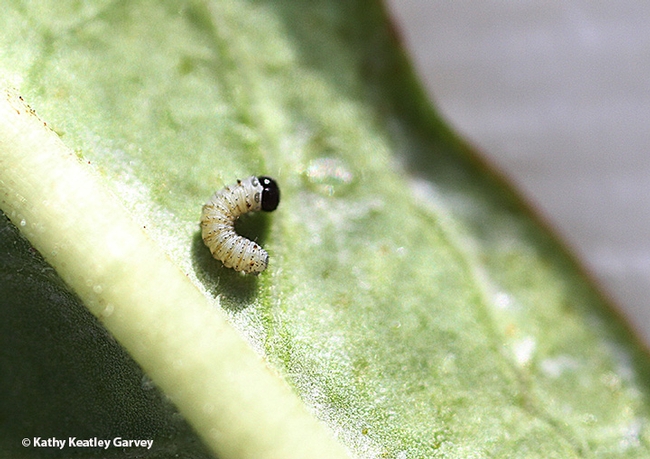
This larva or caterpillar has just hatched. Note the black head. (Photo by Kathy Keatley Garvey)
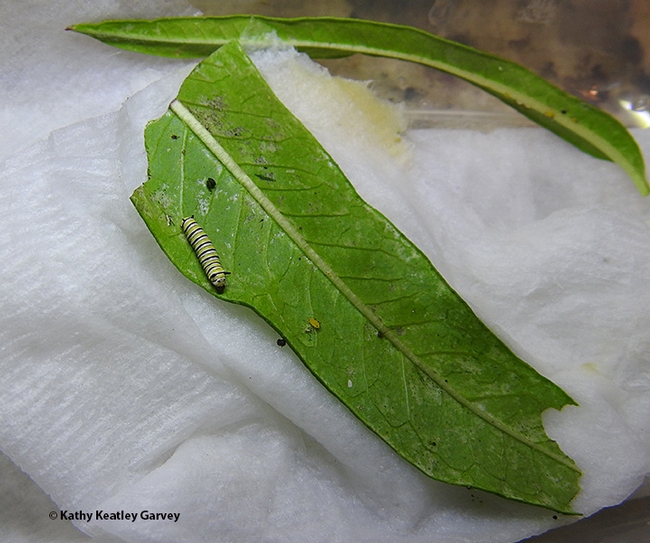
Growing, growing, growing. Now all the caterpillar has to do is eat, eat, eat. (Photo by Kathy Keatley Garvey)
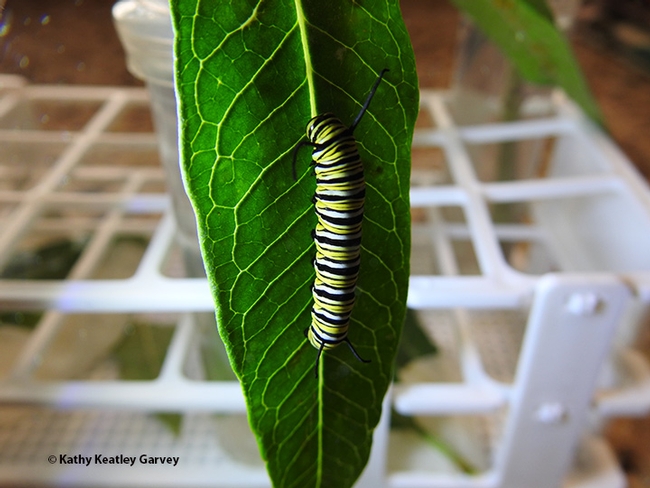
This third instar caterpillar rests on a leaf in its new environment. It was just removed from a lidded container--lidded to keep the milkweed leaf damp. Otherwise, it will dry out. (Photo by Kathy Keatley Garvey)
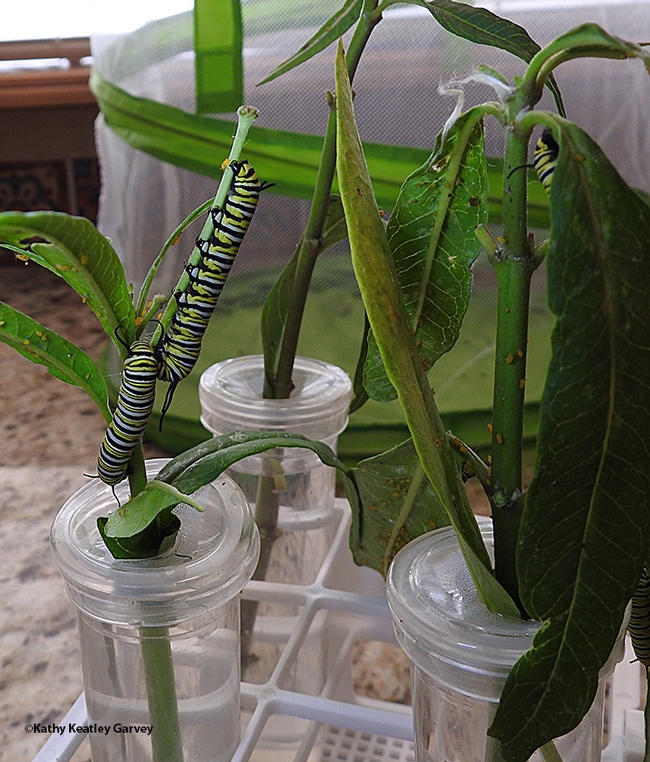
Three monarch caterpillars munching away on milkweed. Two of the 'cats just encountered one another. (Photo by Kathy Keatley Garvey)
Elizabeth Crone and the Declining Western Monarchs
"Why Are the Monarch Butterflies Declining in the West?" Professor Elizabeth Crone of Tufts University who researches monarchs (as well as bumble...
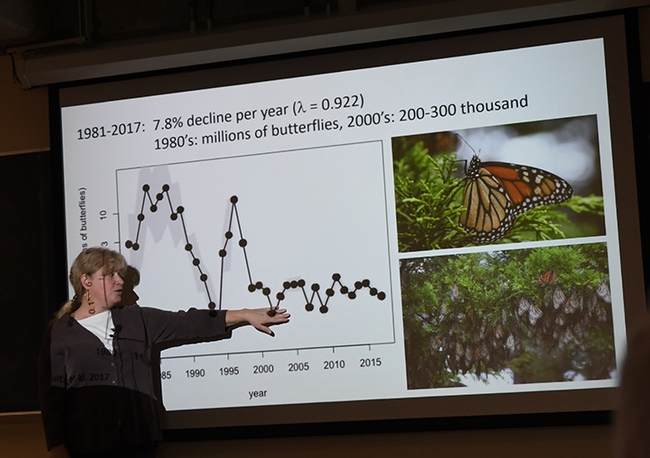
Professor Elizabeth Crone delivering a seminar on Western monarchs to the UC Davis Department of Entomology and Nematology. (Photo by Kathy Keatley Garvey)

Professor Elizabeth Crone chats with scientists following her talk. (Photo by Kathy Keatley Garvey)
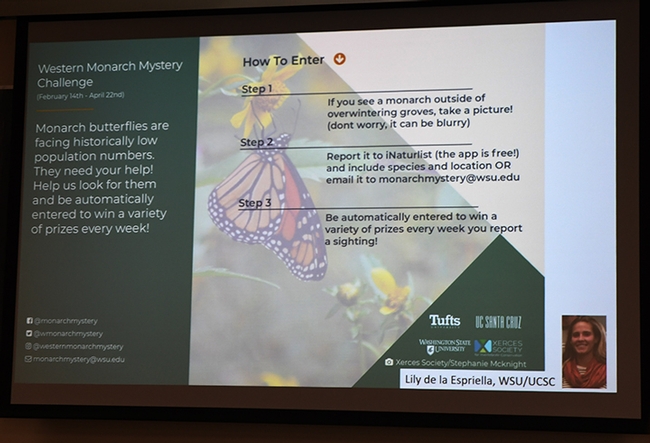
If you see a Western monarch between Feb. 14 and April 22, report it to the Western Monarch Mystery Challenge.

